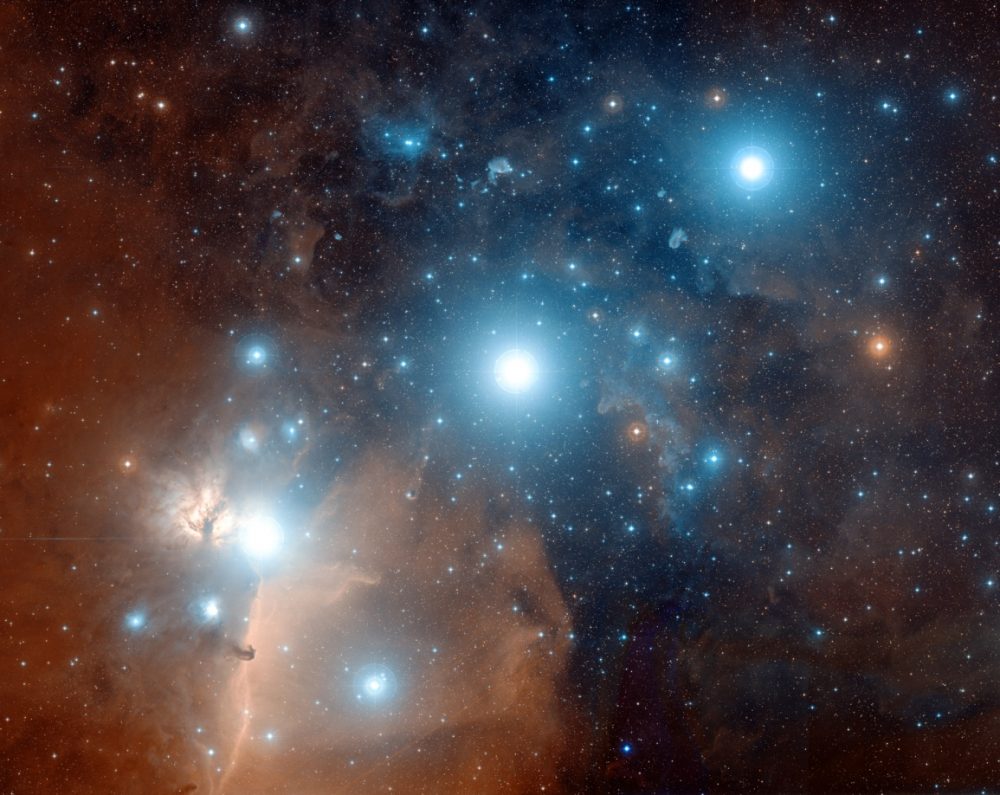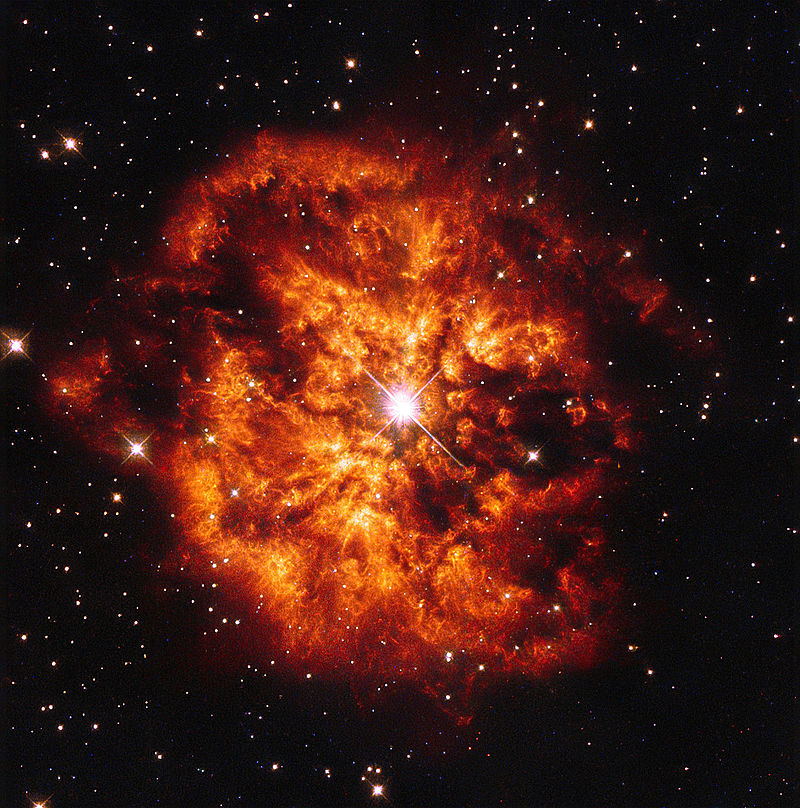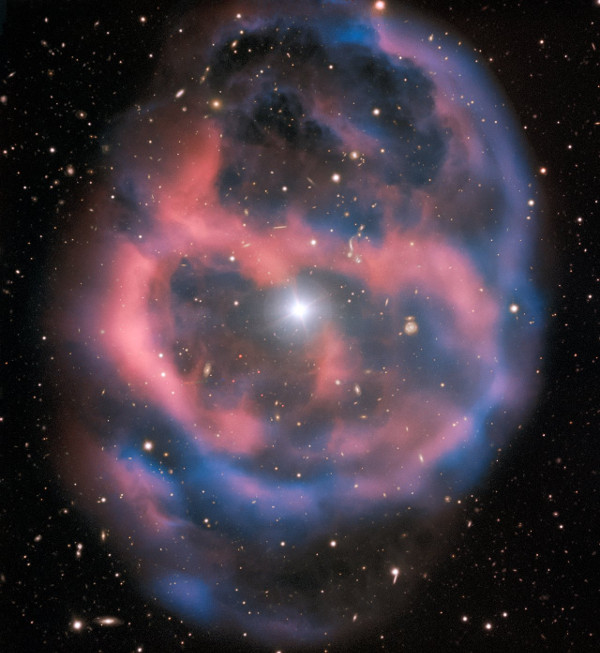
The research of this group, led by Michaela Kraus, can be characterised by its dominant focus on studies of massive hot stars. In particular, the long-term, almost exclusive focus on Be- and shell stars in binary systems has been successfully extended to studies of hot massive stars in their different evolutionary stages, which now represent the main research topics of the group. The research includes studies of luminous, hot, massive B‑ and O‑type stars, as well as massive stars in transition phases, i.e., Wolf-Rayet (WR) stars, Luminous Blue Variables (LBVs), Blue Supergiants (BSGs), B[e] Supergiants (B[e]SGs), Yellow Hypergiants (YHGs), and Red Supergiants (RSGs). The objects studied can be either single or in binary or multiple systems. The group is also involved in observational and theoretical studies of the chemistry and dynamics of the circumstellar material of evolved massive stars.
The research on massive stars is complemented by studies of low-mass stars in late evolutionary stages, namely white dwarfs, subdwarfs, cataclysmic variables and, more recently, RR Lyrae stars. Theoretical studies in the modelling of stellar atmospheres, with a natural focus on hot massive stars, are also part of the group’s research. These studies include full NLTE (i.e. without the assumption of local thermodynamic equilibrium) model atmospheres as well as NLTE models of stellar winds.
Research topics of the group: stellar atmospheres, stellar winds and their modelling; massive stars in short-lived transition phases; subdwarfs.
Members of the group
- Researchers: Michaela Kraus (head), Jiří Kubát, Brankica Kubátová, Péter Németh, Olga Maryeva, Joris Vos, Tiina Liimets, Michalis Kourniotis.
- Emeritus Researcher: Pavel Koubský.
- Postdocs: Julieta Sánchez Arias, Jakub Fišák.
- PhD Students: Suryani Guha, Mauricio Cabezas.
- MSc student (external): Kateřina Pivoňková.
Stellar atmospheres, stellar winds, and their modelling

Theoretical studies in this research area are mainly aimed at developing sophisticated codes for stellar atmospheres and wind modelling, and at investigating the physical mechanisms governing various processes in stars and their environments. One of the main goals of the theoretical studies of the research group led by Jiří Kubát is to provide improved mass-loss rates of massive hot stars using their own developed sophisticated stellar atmosphere (ATA code) and wind codes including 3‑D phenomena (such as non-sphericity and wind inhomogeneities, i.e., wind clumping).
Furthermore, research activities are focused on the development of codes capable of calculating emergent spectra in different wavebands, which can be directly compared with observations. Based on such a comparison, reliable values of stellar and wind parameters can be derived, in particular the mass-loss rates of massive stars at different evolutionary stages and metallicities. The correct value of the mass loss rate is one of the main ingredients forstellar evolution modelling.
In addition to developing their own codes, the members of the group are experienced in using similar stellar atmospheres and wind codes (e.g. TLUSTY, SYNSPEC, PoWR, and CMFGEN) as well as the stellar evolution codes (e.g. MESA) for quantitative stellar spectroscopy and the analysis of different types of stars.
Massive stars in short-lived transition phases

One more expertise of the group is the research of massive stars in short-lived transition phases. These phases are divided into several stellar classes: WR stars, LBVs, BSGs, B[e]SGs, YHGs, and RSGs. During all these phases, the stars display signs for highly dynamic atmospheres and envelopes, and expel large amount of material, often in a series of eruptions. The ejected material accumulates in either circumstellar disks, shells, unipolar, bipolar or multi-polar nebulae.
The research of massive stars in transition phases led by Michaela Kraus is focused on developing suitable methods to derive mass-loss values of these types of stars and to investigate the chemical evolution, structure and dynamics of the ejected material. The knowledge of the amount of mass a star loses within each phase of its life is of utmost importance for reliable predictions of the evolution and final fate of massive stars.
Moreover, members of the group investigate physical mechanism(s) that can lead to enhanced mass-loss and trigger eruptions, as well as they analyse the chemical composition, the 3‑D structure and dynamics of ejacta to uncover the mass-loss history of massive stars in transition.
The group combines results from theoretical models with information derived from observations. Optical, infrared and radio data are collected from 2‑ to 12‑m telescopes, utilizing facilities at GEMINI North and South, ESO’s Very Large Telescopes, APEX Telescope, Nordic Optical Telescope, Gran Telescopio de Canarias, Southern African Large Telescope, 2.2‑m MPI Telescope, 2.15‑m CASLEO Telescope, and the Perek 2‑m telescope. These data are supplemented with images from space missions such as the Spitzer Space Telescope, the Wide-field Infrared Survey Explorer, as well as with photometric data and light curves from various ground-based surveys (e.g., AAVSO, ASAS).
Subdwarfs

Hot subdwarfs form a substantial fraction of low mass stars that experience an intermediate core helium-burning evolutionary phase before they become white dwarfs. They are at a major intersection on the evolutionary crossroad from the giant branch to the white dwarf sequence, at the hot end of the horizontal branch. These compact stars overwhelm white dwarfs in magnitude limited samples and dominate the Galactic disk populations of underluminous blue stars. Unlike white dwarfs, hot subdwarfs have more complex structures and peculiarities that require more sophisticated models, such as NLTE spectral synthesis.
The research in this area is focused on the spectroscopic investigations of hot subdwarfs using TLUSTY NLTE model atmospheres with a goal to process all available spectra and derive atmospheric parameters free of large systematics. The procedure must also include the analysis of composite binary spectra, due to the large binary fraction of hot subdwarfs. Extensions to process atmospheric chemical stratification and radiative interactions in close and compact binaries are underway. The former is important to derive an accurate luminosity function and mass distribution of hot subdwarfs, while the latter is necessary to be able to provide reliable stellar surface boundary conditions for seismic models.
The member of the group Peter Neméth started a web-service to make stellar spectral analysis and atmospheric parameter inference for hot evolved stars available to a larger community. The service is a web interface to the classical NLTE model atmosphere code TLUSTY. Even though all procedures are public and well documented, such calculations are complex tasks from theory through informatics, which require tailored expertise. With the framework provided by Astroserver this procedure can be used on a user platform to produce publication-grade results with relatively little user personal efforts. The interface is also intended to help observers to quickly process spectra, as well as students to take their first step in quantitative stellar spectroscopy and learn spectroscopy with the TLUSTY code.
